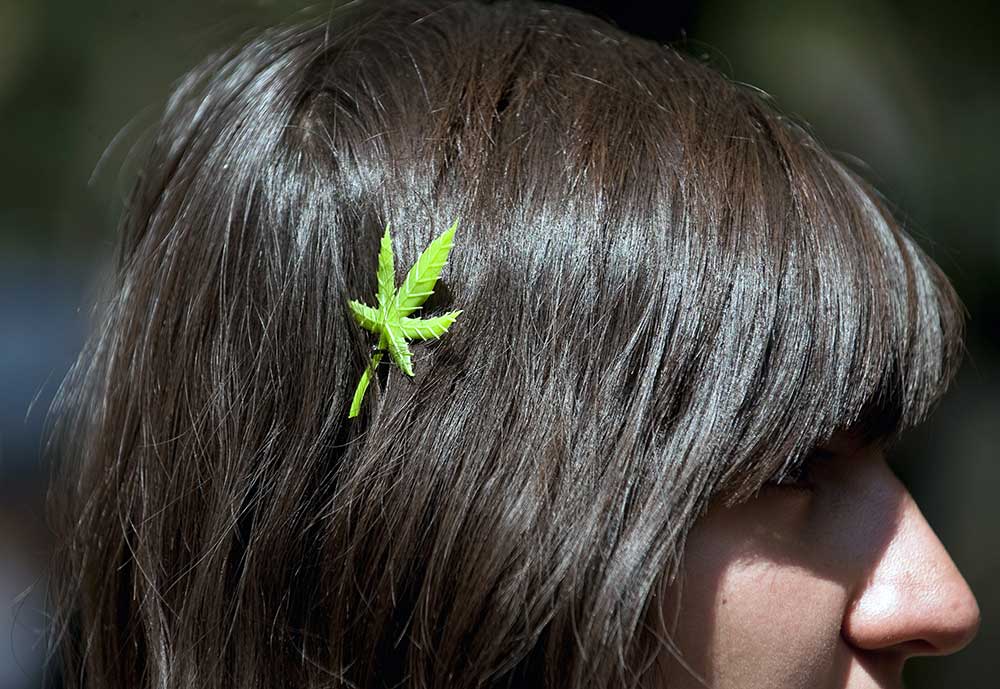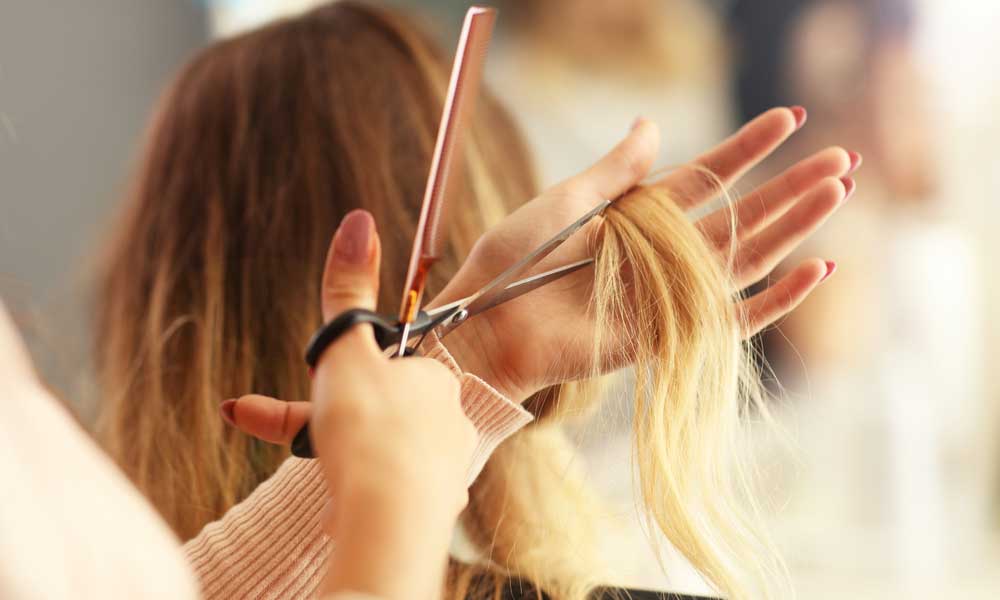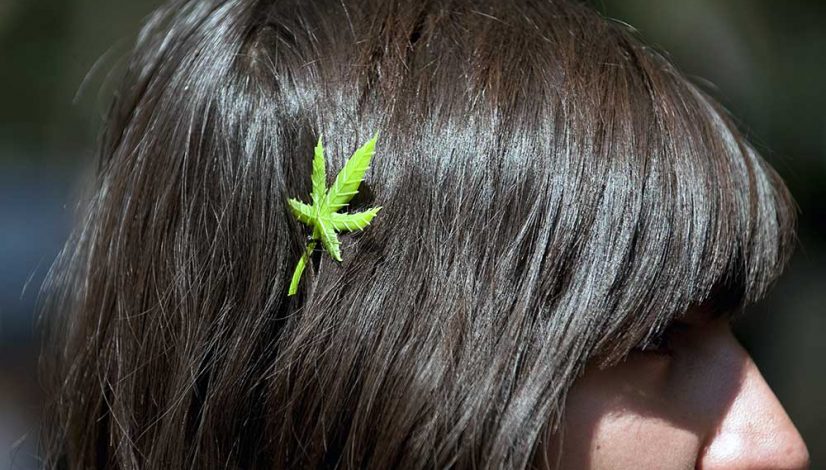How To Pass A Hair Follicle Drug Test
The post How To Pass A Hair Follicle Drug Test appeared first on High Times.
In 2015, seven percent of U.S. workers failed their hair follicle drug test because of weed use. And these weren’t one-off, occasional smokers who were victims of bad timing. People who fail hair tests do so because they’re habitual users. That is, after all, what the test detects. And this is the hard truth: consuming cannabis with any kind of regularity makes it virtually impossible to pass a hair follicle drug test. Nevertheless, there are strategies you can use to increase your odds. Knowing how to pass a hair follicle drug test for weed means knowing how the test—and your hair—works.
What Is Weed Doing In My Hair?

Getty Images
Your body reacts to THC and other cannabinoids in complex ways. And the net result is that THC and other cannabinoids, along with their metabolic byproducts, end up scattered throughout the various systems of the body.
Weed ends up in your hair, or more accurately your hair follicle, via your bloodstream. And that’s actually something pretty interesting.
Signs of cannabis use can stay in your hair for incredibly long amounts of time. But weed only stays in the blood for a very short time. Basically, as long as you’re high.
The body rapidly breaks down (i.e. metabolizes) the cannabinoids in the blood. But before that happens, cannabinoids bind to the sheath of tissue and cells surrounding the root of your hair.
This is all happening underneath the surface of your scalp, of course, but soon enough the cannabinoids will become incorporated into the follicle and from there, the hair strand itself.
Finally, somewhere between five and 10 days, that weed-infused hair will pop out of the top of your head. An involuntary narc that could rat you out at any moment.
And that’s what makes it so hard to spoof a hair follicle drug test.
It takes just the tiniest amount of THC to trigger a positive on the test: one picogram per milligram, to be exact. A picogram, for those keeping score at home, is 0.000000000001 grams.
How Long Does Weed Stay In My Hair?
Unfortunately, the answer to this question is more bad news. Once cannabinoids incorporate themselves into your hair strands, they are there until your hair falls out or you cut it off. Nothing can change this fact.
It’s pretty unreal how long evidence of drug use can stay in human hair. According to a 2004 paper in Forensic Science International, researchers detected traces of opiates in the hairs of English Romantic poet John Keats—167 years after his death. The same researchers found cocaine metabolites in the hair of thousand-year-old mummies in Peru and Chile.
So yeah. A long time.
How Does A Hair Follicle Drug Test Work?

Actually, calling it a hair follicle drug test is kind of a misnomer. Sure, the test is looking for evidence that THC was in the subject’s blood by detecting the presence of the illicit cannabinoid in the cells and fatty tissue of the follicle, but a hair follicle drug test doesn’t assay the follicle per se.
Instead, it tests for THC in the hair strand itself. A positive detection in the strand necessarily implies the drug’s presence in the follicle and, ipso facto, the subject’s bloodstream, which indicates that the subject consumed cannabis.
So technicians are interested in collecting your hair, not your hair follicles.
It goes without saying that hair closer to the scalp is the newest growth and would indicate more recent marijuana use. That’s why technicians cut about 100 strands of hair and lop off everything but the 1.5 inches of hair closest to the follicle.
On average, human hair grows at the rate of about 0.5 inches per month. So 1.5 inches amounts to roughly a 90-day detection window. If you’ve smoked weed fairly regularly during that time, your hair will test positive.
And that’s the key to understanding how to pass a hair follicle drug test. Once you understand that this 1.5 inches of hair is a kind of timeline of your marijuana use over the past three months, you can devise ways to game the test and reduce your chances of failing.
How To Pass A Hair Follicle Drug Test
Hopefully, you have some advance warning of an impending hair follicle drug test, giving you some time to prepare. If you’re unlucky enough to have one sprung on you at work, it’s probably time to start updating that resume.
Here are the key things to keep in mind.
First, if you’ve only smoked recently, you’ll be in the clear. In fact, you could take down bong after bong on the eve of a hair test and not worry about a thing. Remember, it takes five to 10 days for “contaminated” hair to break through to the surface of your scalp. A urine test, on the other hand, would detect recent marijuana consumption.
If you’ve only smoked a few times in the past 90 days, your chances of passing are also looking good. Even though a hair follicle drug test for weed is extremely sensitive, only regular marijuana use will put enough THC in your hair to trigger a positive.
Ultimately, passing a hair follicle test is primarily a question of timing. And if you have an advanced enough warning, you can switch to abstinence mode and not smoke (or eat!) weed for 90 days. Yeah, that sucks. But it probably won’t suck as bad as losing your job.
What’s frustrating is that newer research into hair analysis for cannabinoids is throwing into question much of the established doctrine about follicle tests. One 2015 study suggests that something as innocuous as environmental contact with cannabis plants or smoke can deposit traces of THC in hair.
So just being around someone who’s handling or smoking weed could make you fail a follicle test. Hopefully, further research will demonstrate the unreliability of these hard-to-pass tests and lead fewer employers to adopt them.
Tricks That Won’t Help You Pass

The fact remains, however, that hair follicle drug tests are hard to trick. That’s why so many employers use them and so many people get busted by them.
But that hasn’t stopped people from attempting to pass the test through some creative chicanery. Unfortunately, most of these tricks don’t work, and some of them can hurt your dignity.
The most common of these approaches? Shaving one’s head. Haha, you think. Try to test me now!
It’s an approach that’s more of a possibility for more masculine-identifying people for whom being bald might not totally ruin their look.
But a shaved head won’t stymie a technician. They’ll just take a hair from your body. Probably your armpit or chest. And since body hair grows at a much slower rate and replaces itself much less often than head hair, your chances of passing the test go way down.
So unless you’re willing to shave down entirely—not suspicious at all, is it?—this tactic is a dead end. Never mind the fact that you’d have to keep shaving all your hair until you’ve been weed-free for 90 days.
Another common approach has some common sense to it. Bleaching or dying your hair, or trying to cleanse it with special shampoos, gels or other hair products, seems like it should work. Destroy your hair enough and it’s no longer a viable sample, right?
Well, the companies who administer these tests have a financial interest in researching such methods. And according to researchers with one of the country’s largest diagnostic companies, Quest Diagnostics, hair treatments have little effect on hair follicle drug test results.
This last trick is bold. It’s daring. And that’s what could make it actually work. If you could somehow get the technician to take a sample of hair that was THC-free, say by using a hairpiece or hair extensions, you would pass.
As long as the technician didn’t realize they were taking a sample of hair that wasn’t your own—and remember, they’re trained to check for that kind of thing—you could potentially sneak through.
Indeed, if you’re wondering how to pass a hair follicle drug test without having to drop your weed regimen, it’ll take some creativity and some luck. Otherwise, a hair test will bust you.
The post How To Pass A Hair Follicle Drug Test appeared first on High Times.


